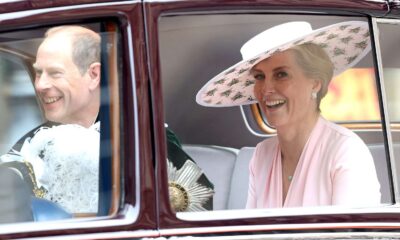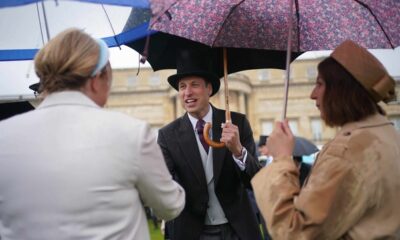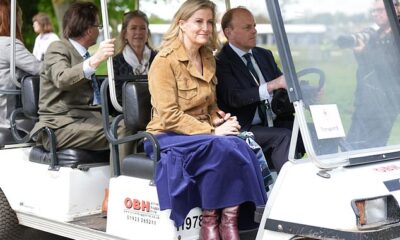Must Read
Prince Edward and Sophie’s Unusual Fine in England’s Smallest County
Prince Edward and Sophie, known as the Duke and Duchess of Edinburgh, found themselves in a peculiar situation during their recent visit to England's smallest county, Rutland.
It was the royal couple's first time setting foot in Rutland, and to mark this occasion, they were required to pay an unconventional fine.
Their visit was centered around unveiling a new statue of Queen Elizabeth II, which is considered to be the first permanent tribute to the former monarch in England.
Apart from the statue unveiling, Prince Edward and Sophie explored various landmarks in Rutland, including the Rutland Showground, the Duke of Edinburgh's memorial garden, and Oakham Castle.
During their visit to Oakham Castle, the royal couple participated in a centuries-old tradition unique to Rutland.
As part of this tradition, Edward and Sophie presented a double horseshoe, which would later be displayed on the castle walls as a token for their inaugural visit to the county.
In Rutland, there exists a long-standing custom that dictates all peers of the realm and members of the royal family must offer a horseshoe as a forfeit on their first trip to the county.
This custom is rooted in the belief that surrendering a horseshoe symbolizes the inability to escape without settling one's debts first.
Legend has it that this tradition is associated with the Ferars family, dating back to the Norman conquest era when Henri de Ferars served as Duke William's master of horses.
The coat of arms of the Ferars family features six black horseshoes on a silver background, reflecting the historical significance of this symbol in Rutland.
Horseshoes are prominently displayed on the walls of Oakham Castle, hanging in the French style to ward off any malevolent forces, as per local folklore.
The method of hanging horseshoes low to the ground in British tradition is believed to safeguard the stored good luck from spilling or dissipating.
While Oakham Castle currently showcases around 250 horseshoes in its Great Hall, this collection represents only a fraction of the total number displayed over the centuries.
In the past, horseshoes were often exhibited on castle gates rather than indoors, making them susceptible to theft.






































